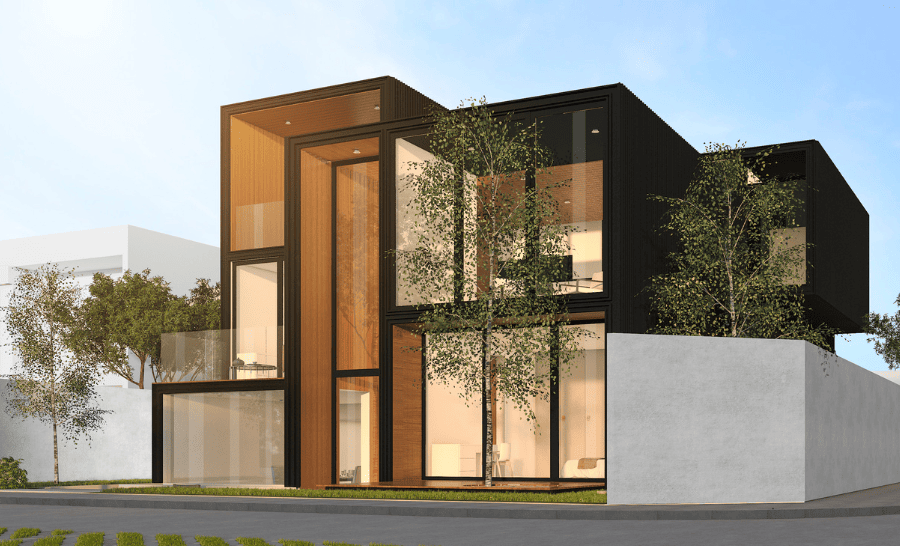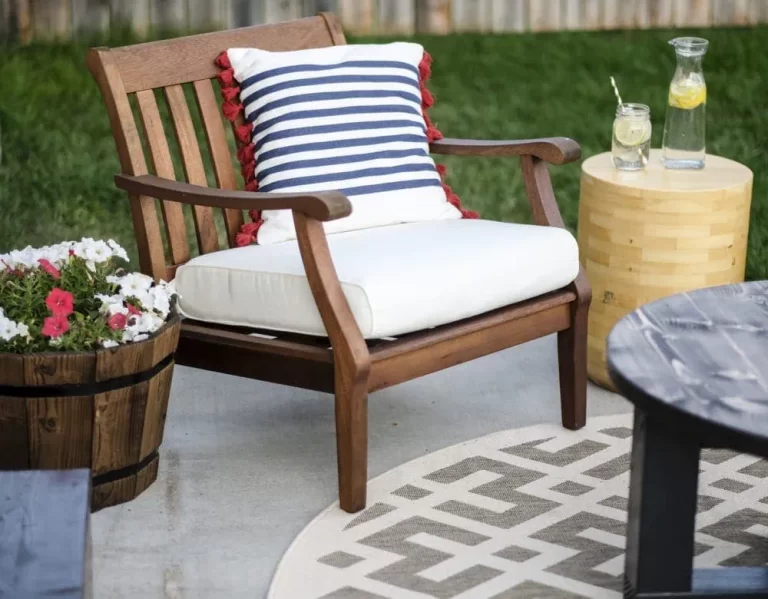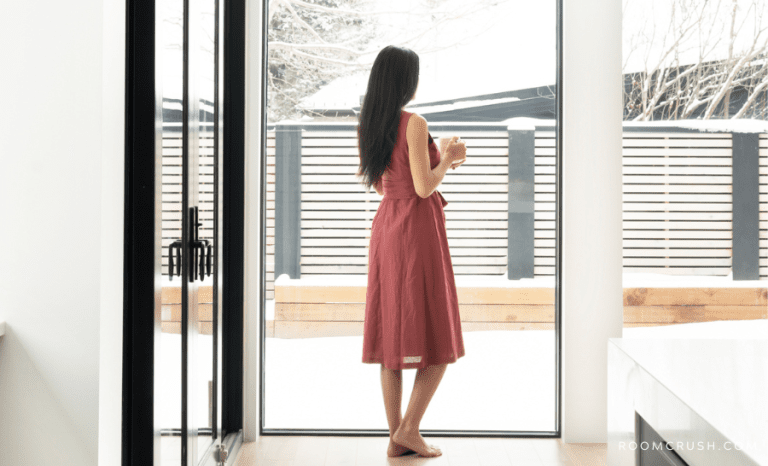How to Save Money When Building a House

You’ve decided to build your dream house. Congratulations! You’re about to join the 65.8 percent of Americans who own their homes.
As great as the prospect of becoming a homeowner might be, the one thing no one tells you about building a new home is how quickly the costs can start to mount up.
Without proper planning, you may end up going over – way over – your initial budget. The good news is – there are several things you can do to tame those costs before they get out of control.
This site uses ads and affiliate content as an Amazon associate earning on qualifying purchases. Disclosure.
Here’s everything you need to know about how to save money when building a house to avoid maxing out your resources when the building process is nowhere near completion.

Use a Stock House Plan
Around here, I’m all about cutting costs without cutting corners. Hiring a professional engineer or architect to design your dream house for you and come up with custom blueprints isn’t exactly cheap.
Might I suggest using stock house plans instead? These cost a fraction of the price you would ordinarily pay for custom prints.
There are several online resources you can use. HousePlans.com, TheHousePlanShop.com, and ThePlanFactory.com are some amazing online house plan databases, with tens of thousands of stock blueprints to choose from.
You’re bound to find something you like. If you have a natural eye for design and the uncanny ability to visualize what a two-dimensional plan would look like in a three-dimensional world, you’ll quite enjoy this phase of the process.
While you won’t have total control over the final layout of your home, most of these blueprint firms offer limited customization options at a small fee. You can work with them to tweak the plan and come up with something you like.
Alternatively, you could hire a professional to make those adjustments for you. Either way, going this route is significantly cheaper than the premium price tag that comes with a fully customized blueprint.
Choose a Smaller Footprint
Don’t let anyone fool you, size matters, especially where home construction is involved. To cut costs, consider using a modest floor plan.
The bigger the house, the higher the costs will be. To put things into perspective, if building your house costs $150 per square foot, an extra 300 square feet will cost you an additional $45,000.
Focus on functionality and build spaces your family actually needs. One way to achieve this would be to adopt an open floor plan for your home build. It creates the feeling and illusion of a larger home without the extravagant building costs.
Choose the Site and Style Wisely
When looking for ways to save money on your construction project, you need to be strategic about every decision you make. This includes choosing the location and style of the home you want to put up.
Here’s what that means. If you’re thinking of buying land to build on, your purchase decision needs to go beyond the price per acre.
You might get more acreage at a lower overall cost, but if it doesn’t come with the critical infrastructure like water lines, sewer lines, gas lines, electricity lines, etc., you’ll end up spending more to get them installed.
On the other hand, buying a developed lot with already set up systems may cost more, but you won’t have to worry about getting them installed later.
I’m by no means insinuating that buying a developed lot is cheaper than its undeveloped counterpart. You’ll need to compare the costs of both to see which one makes more sense.
You might find that buying a developed lot costs significantly more than the cumulative cost of buying an undeveloped lot and then installing the utilities required.
As far as style goes, your home layout can be a potential cost-saving opportunity. An open plan might be cheaper to build since it would have fewer walls overall.
This is not always the case. Since the walls are fewer, the span will be a lot longer. As a result, the beam that holds up the ceiling and floor will be more expensive.
The same thing applies to a double-story home. It would cost more to build a ranch-style house than it would a two-story house with the same square footage.
The latter would require a smaller foundation and less roofing.
Be the General Contractor for Your Project
Yes, you read that right. Most people are not aware that they can be their own general contractors. You should only consider this if you’re experienced in construction and know what you’re doing.
The thing is – many state laws don’t require you to be a licensed GC when building your own home. Managing your own project will save you roughly 10 percent of the overall construction cost.
Keep in mind that you should, at the very least, have a basic understanding of the construction process. There are no two ways about that.
You will, after all, be coordinating with and hiring expert subcontractors, so you will need to know what you’re doing. While you don’t need to know everything, you do need to be good at monitoring timelines and expenses, good with managing people, and a natural problem solver.
When acting as your own GC, you’re required to take out Builder’s risk insurance. This type of insurance usually covers fire, theft, vandalism, and any other damages that may occur to a house under construction.
The policy needs to be active from the moment the building materials first arrive on-site or when the first worker sets foot on the lot. You also need to think about getting the relevant building permits, although some subcontractors may include these costs in their fees.
Again, if you’re not experienced in construction and don’t know what you’re doing, it’s well worth the cost of hiring a good general contractor. The last thing you want to do is try to save some money, do things poorly, and have it cost even more money in the long run.
Purchase the Construction Materials Yourself
Here’s some insider information you may not be aware of. Bearing the material cost of several projects at once puts a huge financial burden on a subcontractor.
Here’s how you can use that to your advantage: Offer to purchase the materials you need for your project directly from the supplier.
Think about it. You’re going to be billed for things like siding, lumber, and wiring anyway, so why not do it and have the subcontractor reduce their bid?
Most of them are usually willing to lower their rates if someone else buys the materials. It’s a win-win for both of you.
You can also negotiate for a discount with your supplier if you make an upfront payment for the materials you need.
Assemble Wholesale Countertops and Cabinetry
It’s no secret that kitchen and bathroom countertops and cabinetry are a huge line-item cost when building a house. If you want to tame those expenses and keep your construction budget in check, consider purchasing ready-to-assemble (RTA) options from wholesalers.
You’ll get premium-quality cabinetry at a fraction of the price. When they arrive, hang them up yourself or get a professional to do it for you.
On the countertop front, standard-sized granite or marble countertops are a great option to explore if you’re looking for ideas on how to save money when building a house. Choose a standard bathroom and kitchen layout right from the onset and then install a standard-sized countertop based on those specs.
You’ll be able to save about 50 percent of the costs if you go with a prefab design, as opposed to what you would pay for a custom fitting.
Just to give you an idea, custom granite or marble countertops cost anywhere between $2,000 and $4,500. A standard pre-made design costs half of that.
Use Standard Sizes for Doors and Windows
You can never go wrong with standard sizes. Oddly-shaped doors and windows are guaranteed to drive up costs whether you’re using an off-the-rack blueprint or a custom house plan.
Non-standard doors and windows require custom installation. They also cost significantly more than their standard-sized counterparts.
When you multiply that by the number of doors and windows you would need to install, you can see how the costs can start to mount up.
Here’s another money-saving tip for you. Visit construction supply stores and shop around for remnants.
You’ll be surprised by what you can find. Most of them stock great-quality, standard-sized doors, and windows, all of which are priced to go.
Do Some Comparison Shopping
When building a house, you’ll need to invest a lot of time in comparison shopping. You need to hunt for the best bargains.
The more you do it, the more likely you are to snag premium-quality, name-brand appliances and finishes at a fraction of their standard retail prices.
Hit the local warehouses and look for last year’s models with sale price tags. Comparison shop for plumbing and lighting fixtures online.
Purchase dinged-and-scratched appliances or discounted floor models. Keep an eye out for repurposed or used items in online marketplaces like Craigslist and eBay.
When you do find items you like, remember to negotiate. If you’re willing to invest the time and do the legwork, there’s no limit to the number of treasures you can find.
You don’t need to be an adept builder to take advantage of these bargains, either. You only need a bit of elbow grease, a lot of ingenuity, and the ability to scavenge for high-quality items in the most unlikely of places.
The road less traveled often delivers the best results.
The More Less-Skilled Jobs You Take On, the Better
If you’re working as the GC on your project, there are several jobs you can take on that are not related to mechanical, engineering, and plumbing (MEP) systems.
Only licensed professionals are allowed to do MEP-related work. Taking on less-skilled jobs such as wood flooring, tiling, floor decking, drywall installation, wall sheathing, etc., will drive down the costs tremendously.
If you’re working with a general contractor, you may not be able to take on any building work. You’ll need to consult with your local building department since regulations may vary.
Many builders are generally unwilling to work with individuals they consider “unknown quantities.” They may not want to risk their insurance on you since they have no way of establishing whether you have the necessary experience to perform the work to standard.
There’s also the not-so-small issue of deadlines. GCs have strict milestones and deadlines to adhere to.
They need to be sure you can do what you say, within the duration required, to get the house finished on time and within budget.
If you can convince them that you’ll hold up your end of the bargain, they may let you take on the less-skilled aspects of the construction. If you are your own GC, you call the shots, so you can do it yourself.
Either way, it’s going to save you loads of cash when building your home.
Do the Final Touches Yourself
In the spirit of taking on the less-skilled jobs, consider doing the final touches yourself. If you hired a builder, ask them to leave out certain aspects of the finishes from the bid and then take care of these once you’re done.
These include things like landscaping, interior painting, wood-trim staining, and so forth.
Ensure that you factor in a sufficient amount of time and preparation. Don’t use those home improvement TV shows as a marker.
Final touches can take several weeks or, in some cases, even months to complete. Keep that in mind if you intend to go this route. The plus side is – it will save you significant cash.
Use Aesthetics to Save Money
Consider adopting home aesthetics that give you opportunities to save money. For instance, going with a “rustic” or “industrial” feel lets you get away with leaving some parts of your project unfinished.
The result will still look stunning and purposeful for your desired look.
Don’t Skimp on the Important Stuff
Not all amenities and upgrades are created equal. While it is important to think about how to save money when building a house, you also need to consider the return on your investment later down the line.
Sometimes, this means spending a little more at the outset to save money several years down the line. Investing in energy-efficient home systems such as Energy Star appliances can save you up to 50 percent of the costs associated with non-efficient systems.
Steer Clear of Finishes That Won’t Raise the Value of Your Home
Last but not least, you need to direct your money where it counts. As a rule, decorative finishes don’t hold their value quite as well as the structural aspects of a home.
Home décor trends, much like fashion, never remain constant. Spend more on elements that are impossible or expensive to add in the future.
For instance, you’re better off building a basement – even if you don’t complete it – than a deck. You can always add a deck later; a basement, not so much.
The same thing applies to upgrading the roofing and siding of your home as opposed to the flooring.
The Bottom Line
Building a home isn’t cheap. It’s the biggest investment you’ll ever make in your life. That’s why you need to be strategic and intentional about where every dollar goes.
If you’re looking for how to save money when building a house, the tips I’ve detailed in this guide would be a great place to start.
Related Articles:
- Signs You Bought the Wrong House
- When Do Sellers Get Their Money After Closing?
- Do You Really Save Money With Solar Panels?








